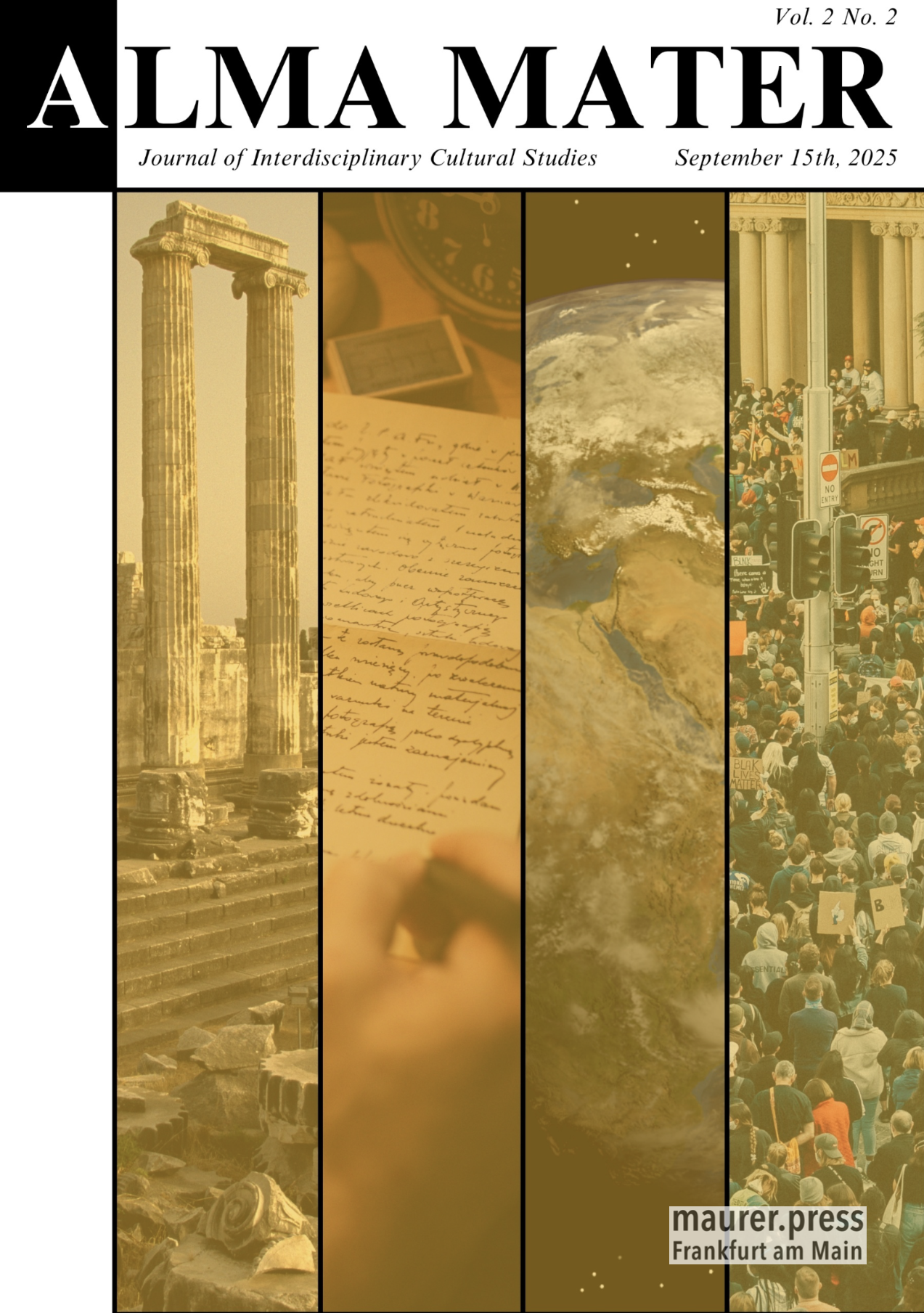| Open Access
Alma Mater – Zeitschrift für interdisziplinäre Kulturforschungen 2025, Bd. 2(1) 268-280
Exploring the Community Identity of the Bene Israel through their Autoethnographic English Literature: Assessment of Nissim Ezekiel’s Background Casually”, Esther David’s The Walled City and Robin David’s City of Fear
S. 268 - 280 | DOI: https://doi.org/10.29329/almamater.2025.1286.17
Veröffentlichungsdatum: März 06, 2025 | Einzeln/Gesamtansichten: 84/44 | Einzeln/Gesamtdownloads: 98/53
Zusammenfassung
Indian Jewry is unique in their own right as they are the only Jewish community to have never been historically persecuted. Among them, the Bene Israel are especially different as not only are they the largest community of Jews living in India but they are also the most fully integrated into the Indian milieu to the extent that there is nothing other than their religion that distinguishes them from the rest of the Indian population. During the British Raj they migrated from their original settlement in the Konkan countryside to settle in the urban centres of Bombay, Pune and Ahmedabad to take up middle class jobs and at the end of the British Raj most of them emigrated to the Jewish State of Israel after its establishment just nine months after India’s independence. Recognized as ‘full Jews in every respect’ by the Israelite Rabbinate only in 1964, a lot of scholarly work has gone into examining the origins of the community, long debated, and questions have been asked about the authenticity of their Jewishness. Their relationship with their coreligionists as well as members of other religious communities in India’s pluralistic fabric where they have a numerically insignificant existence has also been looked into. Yet one of the best ways to study their lived experience as a community would be to explore the auto-ethnographic literature, both fiction and poetry, written by the Bene Israel in India as it would help us get an idea of their personal experiences in the wider socio-political context. Among the best known poets from this community was Nissim Ezekiel who had assimilated himself completely with the cosmopolitan nature of Bombay which is reflected in his distinct writing style - introducing Indian English in the world of Indian English Language poetry. Still his conflicting psychological interests are apparent in his poem ‘Background, Casually’ where he talks about his experience in India growing up as a Jew , often feeling alienated yet choosing to narrate the lives of the same people through his poems. A better peek into their everyday lives has been provided by auto-ethnographic writings of the Sahitya Akademi (India’s national academy of letters) award winning author Esther David. The best of which is seen in her novel The Walled City where she talks us through the generations of a Jewish family in Ahmedabad where they come into contact with both their Jewish and non-Jewish neighbours whose cultures add significantly to their lives. The novel is also special because it is narrated from a woman’s perspective who navigates through life growing up as a female member of a minority community hoping to find a homeland and struggling to break through the shackles Indian society has placed on women irrespective of their religious background. The next auto-ethnographic work I take for study is Esther’s son, Robin David’s novel The City of Fear which, too, is based in Ahmedabad with the 2002 mass violence in Gujarat as its backdrop. This would help me look at the inter-generational experience in a similar social and geographical setting with a changed political situation which brings to the surface the insecurities of their community living in a State dominated by a religious majority. Thus by chronologically studying the very different auto-ethnographic narratives that are presented by these authors in their writings, penned in separate political milieus in India, I shall attempt to underline the identity they asserted for themselves juggling between the homeland they belonged to and the homeland they longed for and their struggle to adhere to their marginal but unique religious identity in a pluralistic India in the 21st century.
Schlüsselwörter: Bene Israel, Auto-ethnographic literature, Jewish identity, Nissim Ezekiel, Esther David
APA 7. Auflage
University), R.B.(. (2025). Exploring the Community Identity of the Bene Israel through their Autoethnographic English Literature: Assessment of Nissim Ezekiel’s Background Casually”, Esther David’s The Walled City and Robin David’s City of Fear. Alma Mater – Zeitschrift für interdisziplinäre Kulturforschungen, 2(1), 268-280. https://doi.org/10.29329/almamater.2025.1286.17
Harvard
University), R. (2025). Exploring the Community Identity of the Bene Israel through their Autoethnographic English Literature: Assessment of Nissim Ezekiel’s Background Casually”, Esther David’s The Walled City and Robin David’s City of Fear. Alma Mater – Zeitschrift für interdisziplinäre Kulturforschungen, 2(1), pp. 268-280.
Chicago 16. Auflage
University), Riti Banerjee (Presidency (2025). "Exploring the Community Identity of the Bene Israel through their Autoethnographic English Literature: Assessment of Nissim Ezekiel’s Background Casually”, Esther David’s The Walled City and Robin David’s City of Fear". Alma Mater – Zeitschrift für interdisziplinäre Kulturforschungen 2 (1):268-280. https://doi.org/10.29329/almamater.2025.1286.17
